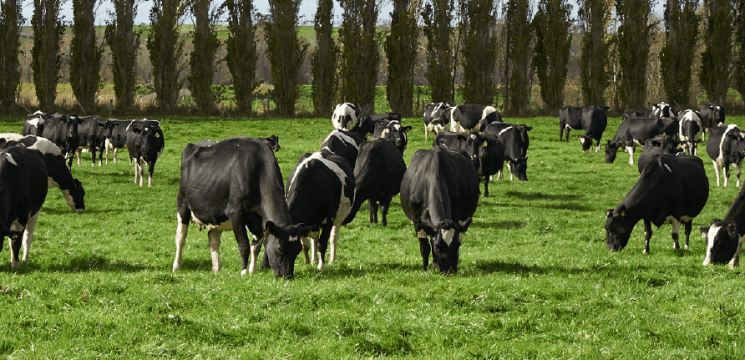News

Calcium Needs of a Dairy Cow
When considering calcium in dairy cows, most people think of milk fever (clinical hypocalcaemia). This is something we can see but it is the unseen consequences of subclinical levels (lower than normal) of calcium in the blood that may have the greatest impact. Most commonly seen in mature cows around calving and early lactation (transition), hypocalcaemia can occur in any cattle at any time.
Transition rations aim to eliminate all preventable cases of hypocalcaemia, clinical and subclinical, by providing the calcium the cow needs for calving and colostrum production, by ensuring calcium metabolism will be able to quickly replenish calcium from the diet over transition and early lactation, and so ensuring normal rumination and appetite return to normal as quickly as possible. This helps maintain best possible energy balance, with least post calving condition loss.
Hypercalcaemia is known as a pivotal disease. If calcium status is not correct, a lot more can go wrong than just milk fever, and possible death. Low calcium increases the risk of slow calving, malpresented calves, still births and dystokia, (cows do need calcium for calving) Uterine inertia, prolapsed uterus, poor uterine involution and retained membranes may all be caused by or exacerbated by low calcium. Calcium is an integral part of the immune system, so added to the problems due to poor muscular function, disease risk is much greater, recovery much slower if calcium is low. Low calcium is associated with increased cortisol levels, itself responsible for depressed immune function. In addition poor calcium means poor phagocytosis ie the disease protecting bug ‘eating’ white cells don’t work as well.
In an age of reducing antibiotic use, getting calcium right is essential. All cows have a period of low calcium over calving – replenishing this calcium as quickly as possible has been shown to hasten return to normal rumination, thus improving energy balance. Energy is the main driver of best immune function. Improving calcium status at calving has been shown to improve first round conception rate weeks later (trials worldwide, including NZ, consistently show positive responses of between 10 and 17% improved FRCR) This is in addition to Calciums direct effects on disease and recovery.
Too many cows in New Zealand do not adequately replenish calcium reserves during lactation so go dry with subclinical and marginal calcium status. Many dry cow diets do not supply the minimal amount of calcium needed even in the dry cow. Marginal problems are exacerbated as production increases, cow (or calf) size increases and or first calving heifers were skeletally poorly grown. Consequently the lactating cow faces too large a gap between what she uses and what she can access. Current knowledge of calcium metabolism shows that many of our traditional views on calcium around calving are not appropriate for today’s cows in too many circumstances. Getting calcium right around calving and during lactation has a big payback in terms of cow health, production, reproduction and peace of mind.
© 2019 Dariy Production Systems Ltd.
Other recent news
Milk Urea (MU)
1 August 2020
Most Dairy Companies have been giving their suppliers their herd bulk milk, Milk Urea (MU) figure for some time now. For the last few weeks MU has been available on...
Read Post30 July 2019
Very good winter for growing grass. APC 2300 and we milked 90 cows through the winter. Now 10 calves on the ground and we are into calving exciting times! Count...
Read Post
